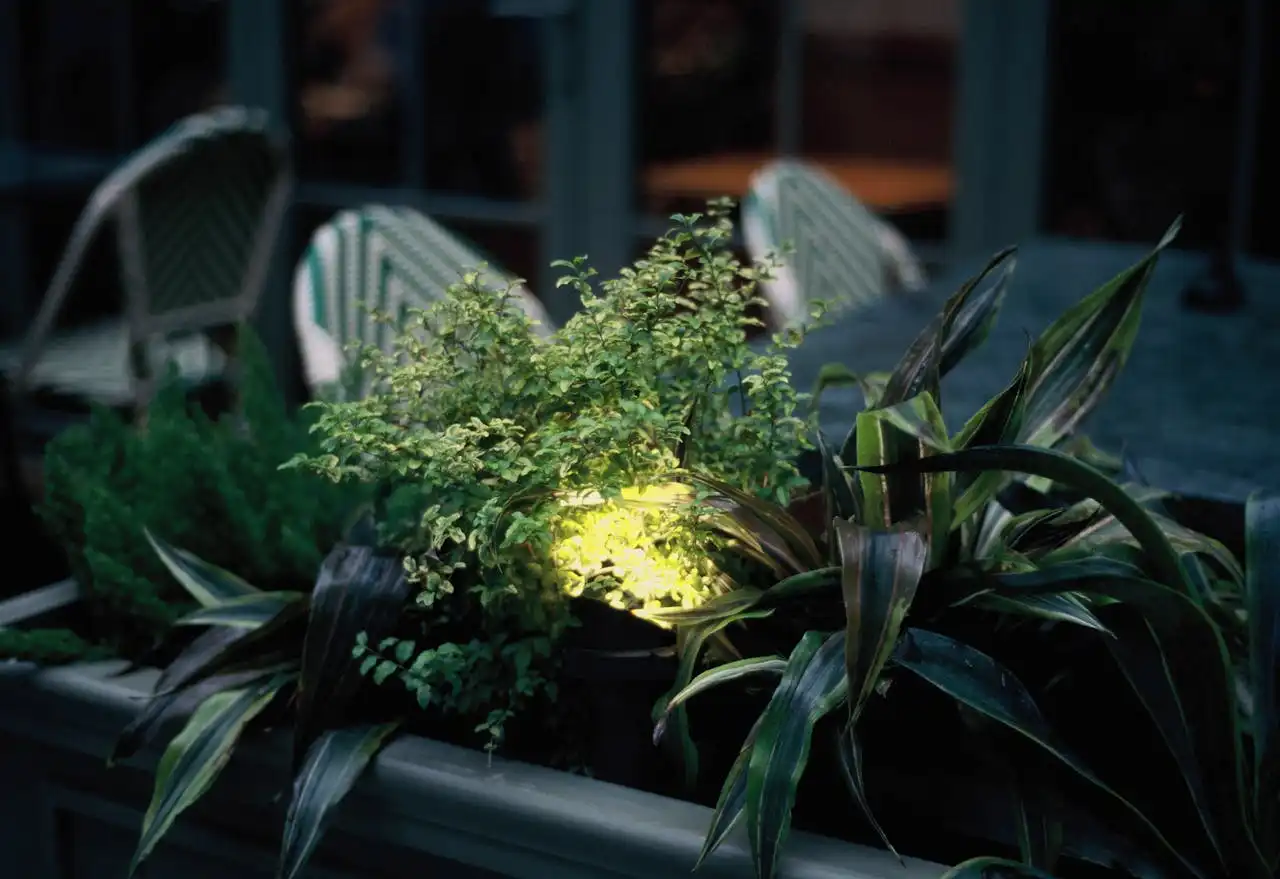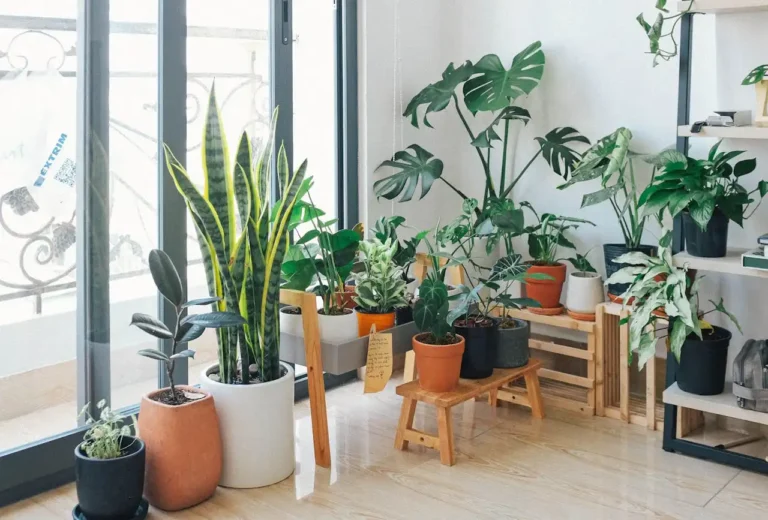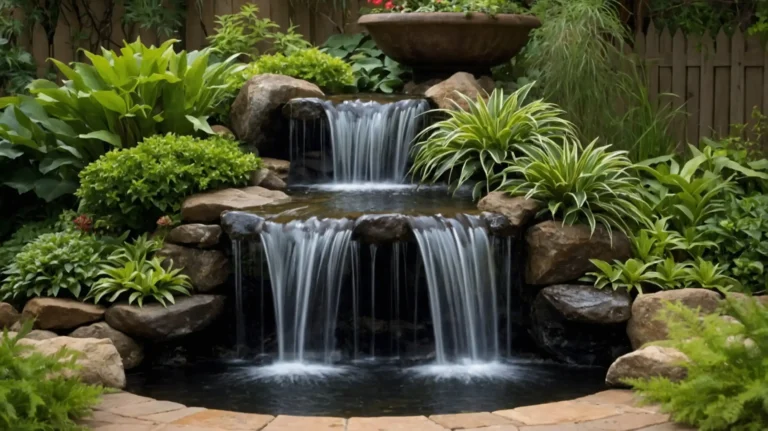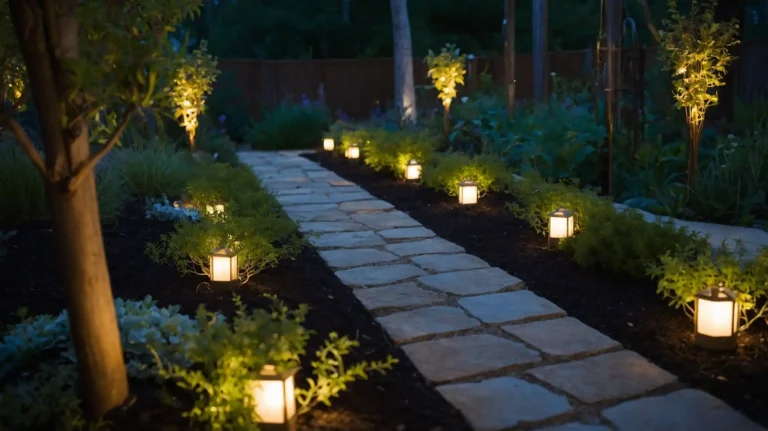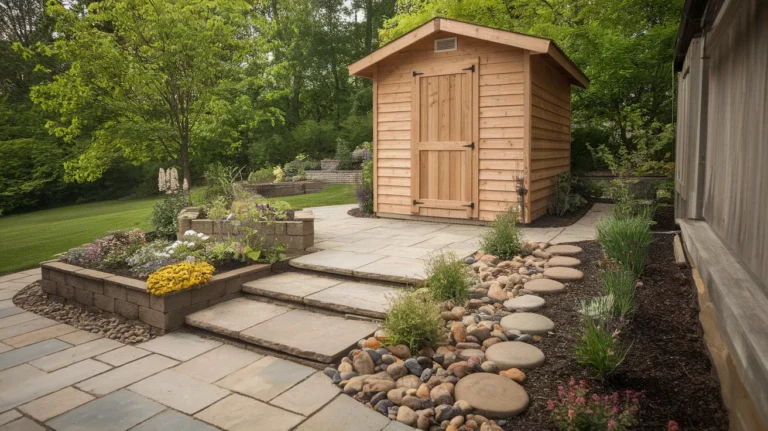DIY Garden Lighting Ideas for Magical Evenings
You step outside as twilight approaches, and your garden transforms into something extraordinary.
The right lighting doesn’t just illuminate your outdoor space—it creates atmosphere, extends your living area, and turns ordinary evenings into magical experiences.
With simple DIY projects and creative thinking, you can craft enchanting lighting solutions that reflect your personal style.
String Light Magic: Creating Overhead Ambiance

String lights remain the ultimate game-changer for garden ambiance. This technique works especially well with bare winter branches or evergreen trees.
You can drape them between trees, fence posts, or pergola beams to create a ceiling of twinkling stars above your outdoor space.
Start by measuring the distance between your anchor points and add twenty percent extra length for graceful draping.
Choose warm white LED bulbs for energy efficiency and longevity. Edison-style bulbs add vintage charm, while globe lights create a softer, more romantic glow.
For a whimsical touch, you can wrap string lights around tree trunks and branches.
Begin at the base and spiral upward, securing the lights every few feet with clear zip ties or plant-friendly wire.
Consider creating zones within your garden using different string light arrangements.
You might outline your seating area with bistro lights while using fairy lights to highlight flower beds or garden borders.
Mason Jar Luminaries: Rustic Charm Made Simple
Mason jar lights bring rustic elegance to any garden setting. You can create these charming luminaries in under thirty minutes with basic supplies from your local hardware store.
Gather wide-mouth mason jars, battery-operated LED string lights, and decorative elements like river rocks, sea glass, or dried flowers.
Drop the battery pack into the jar first, then carefully arrange the light strand inside. For outdoor durability, choose battery packs with waterproof ratings.
The key lies in creating layers—place heavier decorative elements at the bottom and lighter materials on top.
Solar-powered options eliminate the need for battery changes and automatically turn on at dusk. Customize your mason jar lights for different seasons.
You can hang these luminaries from shepherd’s hooks, tree branches, or fence posts using sturdy wire or rope.
Fill them with pinecones and warm white lights for winter, fresh herbs and green lights for summer, or colorful leaves and orange lights for autumn.
Solar Pathway Lighting: Guiding Light Without Wires
Solar pathway lights offer practical illumination while adding visual interest to your garden walkways.
You can install these lights anywhere sunlight reaches during the day, without worrying about electrical connections or running costs.
Choose locations that receive at least six hours of direct sunlight daily for optimal performance.
Space your lights every six to eight feet along pathways, or closer for more dramatic effect. Push them firmly into soft soil or use a small hammer for harder ground.
For enhanced creativity, you can make your own solar lights using solar light kits and decorative containers.
Large decorative stones with hollowed centers work beautifully, as do ceramic planters or even old colanders for interesting shadow patterns.
Consider mixing different heights and styles along your pathways. Combine low-profile lights with taller accent pieces to create visual rhythm and prevent monotony.
Water Feature Illumination: Reflecting Light and Movement
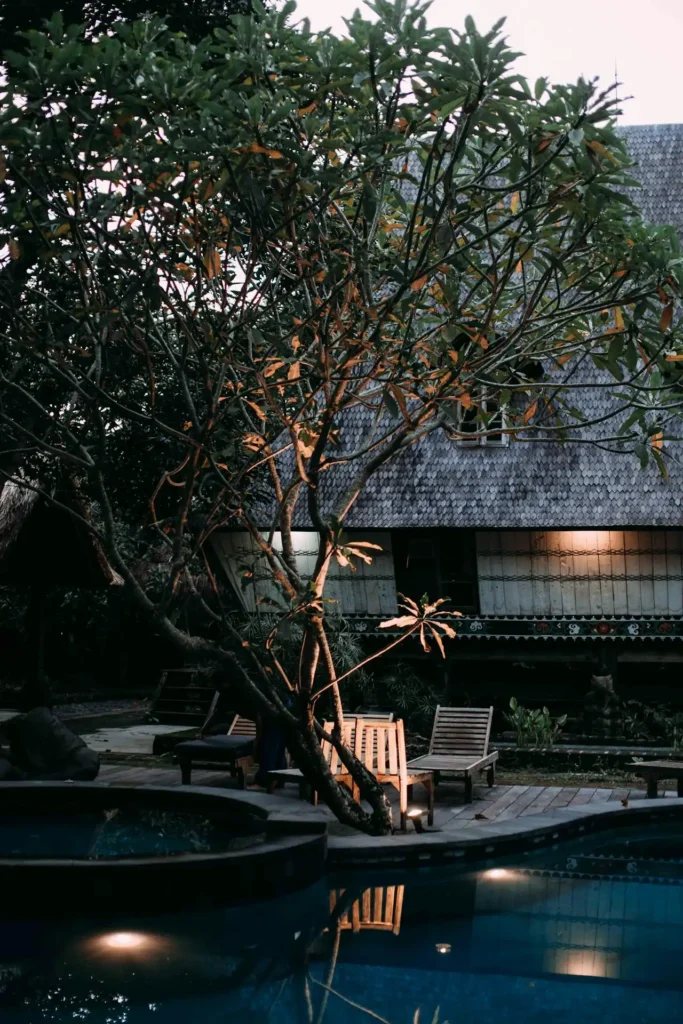
Adding lights to water features creates mesmerizing focal points in your garden.
Whether you have a fountain, pond, or simple water bowl, underwater lighting transforms water into liquid crystal.
Submersible LED lights designed for water features come in various colors and can often change hues or create color-cycling effects.
Place them at different depths and angles to highlight water movement and create reflections on surrounding surfaces.
For safety and longevity, ensure all electrical components carry appropriate waterproof ratings.
Most submersible lights operate on low voltage, making them safer around water while reducing energy consumption.
You can enhance the effect by placing lights behind falling water or beneath floating plants.
The interplay between light, water, and vegetation creates dynamic displays that change throughout the evening as plants move in gentle breezes.
Lantern Displays: Traditional Charm with Modern Efficiency
Garden lanterns provide focused lighting while serving as decorative elements during daylight hours.
You can create stunning displays using lanterns of varying sizes, styles, and heights throughout your garden.
Modern LED candles eliminate fire hazards while providing realistic flickering effects. This creates depth and prevents your lighting from appearing flat or uniform.
Many battery-operated versions include timers and remote controls, letting you manage your entire lantern display from your patio.
Group lanterns in odd numbers for visual appeal, and vary their heights using plant stands, tree stumps, or decorative pedestals.
For DIY enthusiasts, you can craft unique lanterns using materials like bamboo, driftwood, or repurposed items.
Old cheese graters make excellent lanterns when fitted with LED candles, casting intricate shadow patterns on surrounding surfaces.
Up-lighting for Drama: Highlighting Garden Features
Up-lighting creates dramatic effects by illuminating trees, sculptures, or architectural elements from below.
This technique adds depth and creates striking silhouettes against the night sky. Use different colored filters to create seasonal themes or match your garden’s color palette.
Position spotlights at the base of trees, angling them upward to highlight trunk texture and branch structure.
For flower beds and shrubs, you can use smaller up-lights to create layered lighting effects.
Hide the fixtures among plants to maintain a natural appearance while providing gentle illumination for evening garden strolls.
Adjustable fixtures give you flexibility to change lighting angles as plants grow or seasons change.
Look for options with interchangeable lenses that let you control beam width and intensity.
Fire Features: Warmth and Light Combined
Fire features serve dual purposes, providing both illumination and warmth for cooler evenings.
You can create simple fire bowls using metal planters and fire-safe materials, or build more elaborate fire pits with surrounding seating.
For safety, place fire features away from overhanging branches, buildings, and flammable materials.
Create a clear zone of non-combustible materials like gravel or stone around your fire feature.
Portable fire bowls offer flexibility, letting you move warmth and light where needed.
Fill them with decorative fire glass or lava rocks for enhanced visual appeal and better heat distribution.
Consider the scale of your space when choosing fire features. Large fire pits work well in spacious gardens, while smaller fire bowls suit intimate patio settings.
Candle Gardens: Intimate Lighting Solutions
Candles create the most intimate lighting atmosphere, perfect for romantic dinners or quiet reflection.
You can protect outdoor candles from wind using glass hurricane shades, lanterns, or DIY wind guards made from clear plastic bottles.
Create candle gardens using groups of varying heights and sizes. Citronella candles provide the added benefit of natural insect repelling.
Pillar candles in glass cylinders work well for stability, while floating candles in shallow bowls add elegance to patio tables.
For extended outdoor use, invest in high-quality outdoor candles designed to withstand temperature changes and moisture.
Safety remains paramount with open flames. Never leave candles unattended, and keep them away from children, pets, and flammable materials.
Color-Changing Technology: Modern Magic
LED color-changing lights let you transform your garden’s mood instantly. Avoid overwhelming your space with too many colors at once.
You can program different colors for various occasions, from soft blues for relaxation to vibrant reds for entertaining.
Smart lighting systems connect to your phone, letting you control colors, brightness, and timing from anywhere.
Set up automated schedules that gradually dim lights as the evening progresses, or create color sequences that change throughout the night.
Use color strategically—warm colors create cozy atmospheres, while cool colors make spaces feel larger and more contemporary.
Many color-changing lights offer preset programs like gentle fading, color cycling, or music synchronization for special events.
Budget-Friendly Lighting Hacks
You don’t need expensive fixtures to create magical garden lighting. Thrift stores often carry unique containers perfect for DIY lighting projects.
Repurpose household items like old CDs as reflective elements, or use aluminum foil behind lights to increase their brightness and coverage.
Old colanders, decorative bowls, and vintage lanterns can be transformed into stunning light fixtures with basic electrical components.
Consider battery-powered options to avoid costly electrical installations.
While initial bulb costs might be higher, LED efficiency means lower long-term operating costs and less frequent battery changes.
Shop end-of-season sales for outdoor lighting deals, and stock up on decorative elements during off-peak times.
Maintenance and Seasonal Considerations
Regular maintenance keeps your garden lighting system functioning beautifully year-round.
Clean solar panels monthly to ensure optimal charging, and replace batteries in battery-operated fixtures before they completely drain.
Protect fixtures from harsh weather by choosing appropriate ratings for your climate. Seasonal adjustments keep your lighting fresh and relevant.
Store removable elements during extreme weather, and trim vegetation that might grow to block light paths or solar panels.
Switch to warmer colors during autumn and winter, and incorporate seasonal decorative elements like pinecones, shells, or holiday themes.
Plan for plant growth when installing permanent fixtures. What looks perfect in spring might be completely obscured by midsummer foliage growth.
Safety and Installation Tips

Electrical safety should always be your top priority when installing garden lighting.
Use GFCI outlets for any plug-in fixtures, and ensure all electrical connections remain dry and properly sealed.
When burying cables, mark their locations to prevent accidental damage during future garden work.
Use proper outdoor-rated cables and connectors designed for underground installation. Check local building codes before installing permanent lighting fixtures.
Some communities have regulations regarding light pollution, fixture heights, or electrical installations.
Test all lighting systems before special events, and keep spare bulbs and batteries on hand for quick replacements.
Conclusion
Transform your garden into an enchanting evening retreat with creative DIY lighting solutions.
Mix different lighting types, experiment with colors and heights, and remember that the most magical gardens combine practical illumination with artistic flair for unforgettable outdoor experiences.

